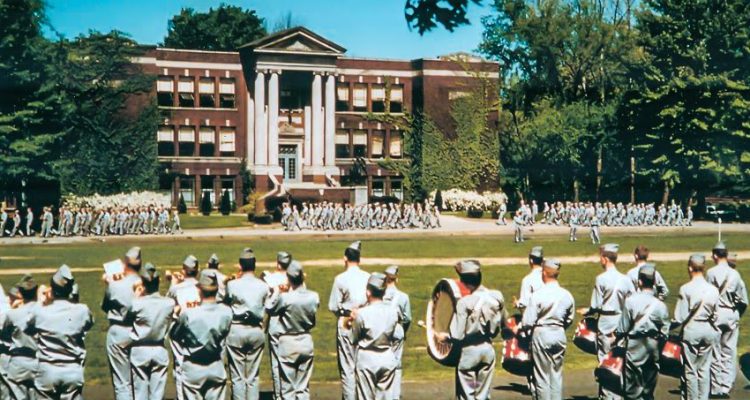By Bill Hanna
Weelunk Contributor
I am a 1959 graduate of Linsly Military Institute (now The Linsly School), and during the past year as the school celebrated its 200th anniversary, I often found myself reflecting on the three years I spent there and how times have changed so drastically since then.
Because one of my granddaughters is a sophomore at Linsly, I have a reason to visit the school regularly for any number of events in which she participates or sometimes to pick her up after school on the days when her father, who teaches social studies there, has after-school duty.
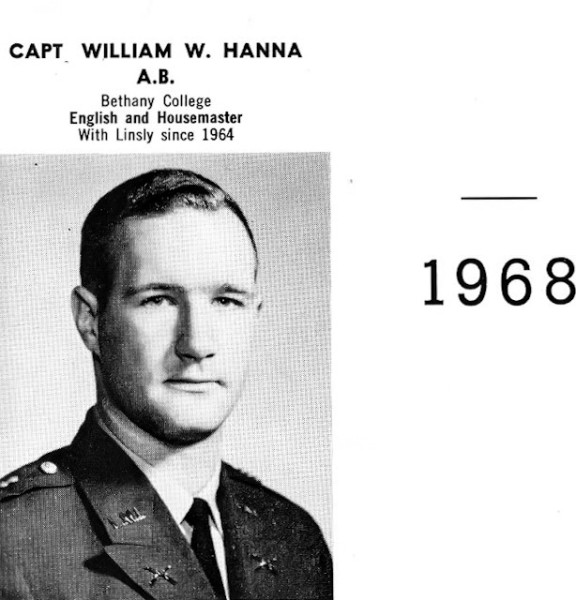
Prior to enrolling at Linsly, I attended school in my hometown of Bethany, W.Va., but somewhere near the end of my freshman year in high school, my parents decided that Linsly would be a good fit for me. Thus I traded in my former school “uniform” of a T-shirt, blue jeans, and sneakers for a gray, long-sleeved shirt, matching gray trousers with black stripes down the outside of each leg, black socks, black shoes, and a black tie. (If anyone had ever told me I would be wearing a necktie to school for three years, I would have questioned that person’s sanity.)
My Linsly
Today The Linsly School is located at 60 Knox Lane on a hill overlooking its beautiful campus, but when I first came to it as a sophomore in 1956, the school was housed in Old Main at Thedah Place, where the Woodsdale Kroger store now stands.
If you can picture it, the front of the school, guarded by the landmark aviator statue, faced the main entrance to Kroger’s, which sits on what back then was the location of the drill field.
The School Day Begins
Weather permitting, every morning the entire battalion would assemble on the paved road in front of Old Main for inspection and the flag-raising ceremony. The battalion comprised seven “companies” from Headquarters and then A through F companies, and they were arranged by height and grade, with the exception of Headquarters, which was composed of the members of the Drum and Bugle Corps.
When we were all in place and the cadet captains stood ready in front of their respective companies, the cadet captain adjutant would face us and give the following commands: “BATTALLLLLION ATTENNNNSHUN! REPORT!”
And the cadet captains would reply: “HEADQUARTERS COMPANY ALL PRESENT OR ACCOUNTED FOR, SIR. A COMPANY ALL PRESENT OR ACCOUNTED FOR, SIR. B COMPANY ALL PRESENT OR ACCOUNTED FOR, SIR. And so on down the line.
Following the report, the flag was raised as a bugler played “To the Colors,” and then it was time for inspection as the cadet captains examined each member of their respective companies for proper haircut (I flunked one of those once after my mother played barber on a Sunday evening.) and shined shoes and belt buckles. Then it was inside Old Main for the beginning of classes
Old Main
Old Main contained three floors, and most of the student body entered through the side doors leading to the ground floor because the steps, aka “The Senior Steps,” leading up to the main front entrance were off limits to all but faculty members, senior cadets, and visitors. Yes, rank did have its privileges back then.
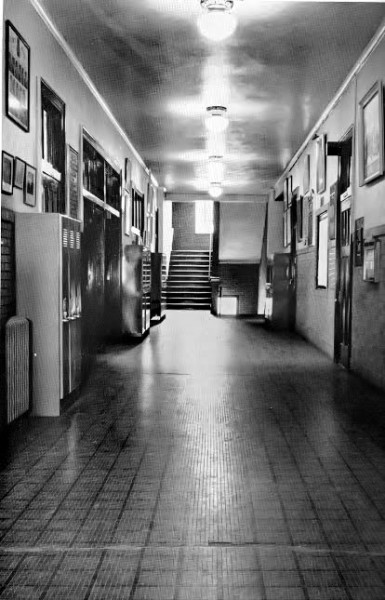
The ground floor housed a long room that doubled as the mess hall and the indoor rifle range, the kitchen/cafeteria, the swimming pool, and one classroom. Lockers for the underclassmen lined both sides of the mess hall/rifle range, and, of course, this is where my locker was located during my first year.
The majority of the classrooms occupied the long hallway comprising the second floor, where the main office and the adjoining office of Major Basil G. Lockhart, head of school, were located. (In his later years there, he was Col. Lockhart.) Presiding over the main office in those days (and for many years beyond) was a diminutive blonde named Miss Lucille Munn.
Although her official title was secretary, Miss Munn did everything from type letters, handle the payroll, greet visitors, distribute faculty mail, and supervise the sale of textbooks. She also knew every cadet by his first name, and she regularly helped students avoid failing inspection by performing emergency button-replacements on uniforms. And first-time dorm students suffering from homesickness always found her a comforting influence. Major Lockhart was unquestionably the headmaster, but during her 50-year tenure Miss Munn was undeniably the school’s heart.
Also on the second floor was the canteen, where cadets were able to purchase any number of items, including a little wire gismo that held the flaps of the shirt collar firmly in place. At one end of this hallway was the classroom of Capt. Douglas Haigwood (later Maj. Haigwood), who, in addition to teaching history and directing the drum and bugle corps, served as the school’s commandant. Whenever classes changed, Maj. Haigwood would emerge from his room and stand at the end of the hallway with his arms akimbo and wearing his trademark I-dare-anyone-to-make-a-wrong-move glare. The first time I laid eyes on the man, I thought I was gazing at possibly the world’s meanest human being. His mere gaze scared the hell out of me, but during my ensuing three years as a student and then later as a Linsly faculty member for four years, I came to know, respect, and admire Doug Haigwood for what he really was – a dedicated and knowledgeable educator, an accomplished music director, and a man whose outward demeanor at the end that hallway belied the heart of gold that beat within his chest.
The third floor was home to a few more classrooms, including the biology and chemistry labs, in addition to the library and a huge study hall that ran length of the building on one side of the hallway. At the front of the study hall was a stage where the faculty member on duty could sit and observe everyone and where Maj. Lockhart would lead the “Linsly Locomotive” cheer during pep rallies.

Classes and Capt. Crawford
To say that I was terrified when classes began that first day is beyond an understatement. I’ll spare you an account of every class that I had, but two of them really stand out in my memory. I always have been and always will be a pathetic math student, which I am certain can be traced back to my grade-school days when my grandmother did my homework for me. And now here I was walking into algebra class at a private school.
The math teacher was a very large man named Cmdr. Walter Willson, and his room was a spacious one in which the chairs were arranged next to each other in a single line down each wall to form a block U. Two rows of chairs sat against a solid wall, but the third side was next to a series of windows. When Cmdr. Willson entered the room, the ranking cadet called the class to attention, and we stood in front of our seats until the cadet saluted and gave the absence report. The teacher returned the salute and said simply, “Seats!”
When we were seated Cmdr. Willson explained that we could sit wherever we liked for the first month of school until grades came out. At that point we would be seated according to our monthly average in the class, and the seating arrangement would change every month with the release of the grade reports. The student with the highest average for the month would occupy the first seat nearest the door to the room, and the rest would follow around the U. Cmdr. Wilson also made it a point to explain that those with the lowest averages would be sitting in the seats by the windows so they could “see the light.” Obviously, I never came close to sitting in that first chair, but surprisingly I didn’t quite make it to the window seats either, and so I spent my days during algebra class in the dimness of mediocrity.
During my three years at Linsly I was fortunate to have some marvelous teachers, but only one of them had a major impact on the direction my life ultimately took. You’ll recall I mentioned earlier that there was one classroom secluded in a corner of the ground floor. This small room with its unfinished brick walls was the sanctum sanctorum of Capt. Gordon Crawford, the upper-school English teacher.
As we filed into the classroom, a voice from the front of the room bellowed, “ALLLLLLLRIGHT, LADIES.” Oddly enough the source of this overwhelming noise was a compact chap who resembled a charming garden gnome. He sported a little potbelly, and a monocle (Yes, a monocle!) dangled at the end of a cord around his neck.
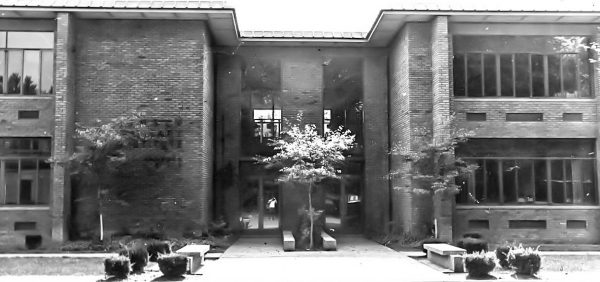
Someone once said that from grade school through graduate studies you could count your truly great teachers on only one hand. Upon reflection, I am able to name four of them, and Capt. Crawford heads the list because he had a greater influence on me than any of the others. His knowledge of grammar and literature never ceased to astound me, and I would not trade the three years I spent under his tutelage for any of the classes I had in college and graduate school.
In addition to the daily and weekly grilling he administered in grammar and vocabulary, Capt. Crawford required a composition every week (One comma splice earned an overall grade of F.). And there was never a time when we were without a book to read, including the summers. From my sophomore through my senior years I read from the works of Wolfe, Faulkner, the Brontes, Norris, Balzac, Walpole, Dickens, Twain, and, of course, Shakespeare (Capt. Crawford’s “act tests” were brutal.) to name just a few.
As I look back on my time at Linsly, I have a plethora of fond memories, but Capt. Crawford will forever remain at the forefront of them. He was incredibly eccentric, and his class was exceedingly demanding, but he instilled in me a love of language and literature that led to my lifelong career of teaching English and journalism at both the high school and college levels. I also had the unique experience of knowing Capt. Crawford as a colleague when I returned to Linsly as a member of the English Department for four years before moving on to West Liberty University, where for 37 years I passed on to my own students much of what I learned from Capt. Crawford.
The Best Part Of The Day — Lunch
Now let’s return to the ground floor and the kitchen/cafeteria, where the cooks, headed by Mrs. Becker, managed to outdo themselves every day by offering the most incredible homemade lunches imaginable. I will never forget walking into that cafeteria on my first day of classes. At my previous school a hot lunch cost the grandiose sum of 20 cents and consisted of some kind of sandwich (a hot dog or a sloppy joe), a small carton of milk, a square of Jell-O, and perhaps a little cupcake.
Keeping this in mind, you can imagine my surprise when I entered the cafeteria to be confronted by a veritable smorgasbord! If you preferred a cold sandwich, you could select from a variety of meats and cheeses and either white or wheat bread. Several soup selections were also available for the lighter eaters. But as I moved on deeper into the room, I saw ladies all dressed in white spooning heaping mounds of honest-to-God mashed potatoes (Yes, there was gravy too.) onto cadets’ trays accompanied by a generous slab of roast beef, and a selection of three or four vegetables. Rolls and butter were also an option, and then came the dessert shelf featuring an amazing array of homemade cakes and pies. School just could not get any better than this.
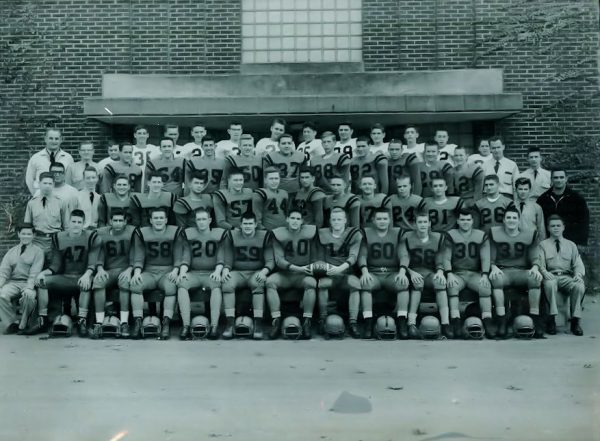
After I had loaded my tray, I came to a pleasant lady sitting in front of an adding machine, and as she proceeded to total up the items (Everything was ala carte.) I had selected, I thought, “I don’t have any money. How in the hell am I going to pay for this?” When she had punched the total key, the woman looked up at me, smiled sweetly, and said, “Your name, please.” After I replied, I was about to confess to my shortage of cash, when she said, “Thank you,” and turned her attention to the next cadet behind me.
Totally befuddled and confused, I carried my tray into the adjoining mess hall now filled with folding tables and chairs. As I sat down to partake of my bountiful repast, I looked at the cadet next to me and said, “Excuse me, but this is my first day here. When I came to the lady with the adding machine, she didn’t ask me for any money. Are the lunches free?”
To his credit, the cadet didn’t mock me for my naïve stupidity, but instead he just smiled kindly and said, “No, but don’t worry about it. The school will send your parents a lunch bill at the end of each month.”
And those bills became a monthly bone of contention between my parents. My father, who after learning the first monthly lunch bill was not a tuition payment, frugally suggested that I begin carrying my lunch to school each day. However, when I protested by pointing out that “most” of students used the cafeteria, my mother stepped in and said she wanted me to enjoy the “total Linsly experience.”
The Rest Of It
In addition to what I already have delineated, my “total Linsly experience” comprised playing (not very impressively) football, participating in the annual Linsly Minstrel (one of the best experiences I ever had), and earning the rank of First Lieutenant for my senior year.
Among the privileges associated with being a cadet officer were the right to have a locker in the hall that opened onto the senior steps, permission to use those steps, and the ability to hand out punishment-duty slips to underclassmen who violated conduct rules such as failure to salute an officer or wearing the uniform improperly. Those poor souls slapped with punishment duty had to report after school and march in a very large square behind Old Main (in the mess hall during inclement weather) for an hour, carrying a heavy rifle on their shoulders.
During the nice weather all the cadets would report to the drill field after classes for an hour of practicing company marching maneuvers in preparation for the final drills competition held annually in the spring at Wheeling Island Stadium. This was a major event for parents and families to attend, and it was a huge honor for the companies that won.
I often have heard people say how much they disliked their high school years, but I absolutely loved the time I spent as a student at Linsly Military Institute. (I didn’t even mind being dubbed a “tin soldier” by guys from other Wheeling high schools.) Perhaps that’s why after all these years whenever I drive through the parking lot of the Woodsdale Kroger’s, I have the irresistible urge to salute.
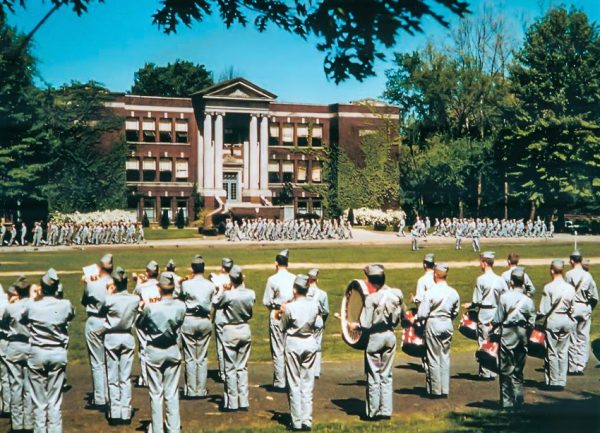
(Photos compliments of The Linsly School Museum and archives.)
(Author’s Note: I extend a special thanks to Bill Wilson, also a member of the class of 1959, without whose help this piece never would have come to fruition.)


